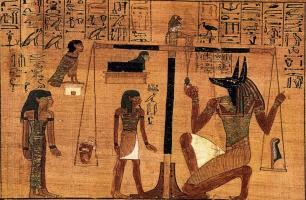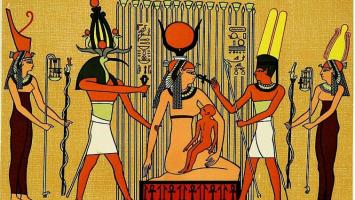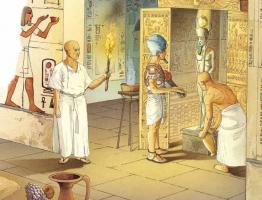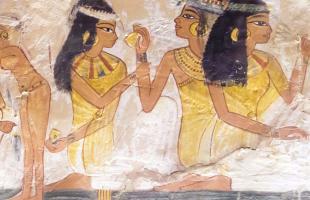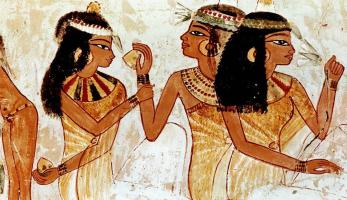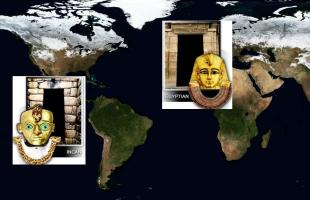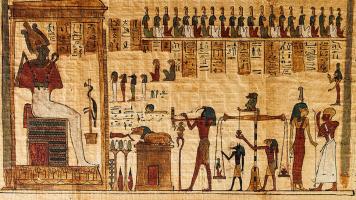A humiliating secret of ancient Egypt
Dalya Alberge reported in 2003 on the details of the defeat of the ancient Egyptians by another Nile superpower, and how those details were kept hidden. The ancient Egyptians were "wiped" out of history in one of their most humiliating battle defeats.
A 3,500-year-old inscription in the British Museum shows that the Sudanese kingdom of Kush succeeded in destroying its northern neighbors.
The revelation is contained in 22 lines of sophisticated hieroglyphics deciphered by British Museum and Egyptian Egyptologists, following its discovery in February 2003 in a richly decorated tomb at El Kab, near Thebes, Egypt.

The inscription provides previously unknown details of unprecedented battles "since the days of god" i.e. since the beginning of time. Experts believe that the humiliation of the defeat was such that the ancient Egyptians preferred to omit the memory of it from their history.
Contemporary Egyptian descriptions have led historians to believe that the kingdom of Kush was weak and in a state of barbarism for hundreds of years, even though it boasted a complex society with vast gold resources and dominated major trade routes in the heartland of Africa. It finally conquered Egypt in the 8th century BC.
Mr Davies, who led the joint project between the British Museum and the Egyptian archaeological team, said: 'It is now clear that Kush was a superpower that had the capacity to invade Egypt. It was a major invasion, that shocked the entire region, an event that remained undocumented.
"They ranged beyond the mountains, the Nile, without limits. This is the first time we have proof of that."
Clearly Kush, at that time, conquering Egypt, seized supreme power in the Nile Valley.
"If they had simply occupied Egypt, the Kushites might have eliminated it. The extinction of ancient Egyptian civilization would have been achieved. But the Egyptians were resilient enough to survive, and shortly thereafter began the great imperial age known as the New Kingdom. The Kushites were not interested in prolonging the occupation. They limited themselves to looting many precious objects, a symbol of domination. They did a lot of damage."
The inscription was found between two internal chambers, carved into a rock tomb, and was covered in soot and dirt. Gradually the dirt was removed.
Mr. Davies said:
"I thought it was a religious text, but it turned out to be historical. Gradually, a real story emerged, a new text written in red paint, reading from right to left."
The tomb belonged to Sobeknakht, a governor of El Kab, an important provincial capital, during the latter part of the 17th Dynasty (circa 1575-1550 BC).
The inscription describes a ferocious invasion of Egypt by Kushite armies and their southern allies, including the land of Punt on the southern coast of the Red Sea. Vast territories are said to have been affected and Sobeknakht is shown in the heroic role of organizing a counter-attack.
The text takes the form of a speech addressed by Sobeknakht to the survivors:
"Hear you, who are alive on the earth... Kush has come... He has moved in all his extent, he has raised up the tribes of Wawat ... the Land of Punt and the Medjaw..."
It describes the decisive role played by "the force of the great Nekhbet", the vulture-goddess of El Kab, as "force of the heart against the Nubians, who were burned in fire,” while the “chief of the nomads came down through the blast of its flame.”
The discovery explains why Egyptian treasures, including statues, steles and elegant alabaster pottery found in the royal tomb at Kerma, were buried in Kushite tombs: they were war trophies.
Mr. Davies said:
“This has never been adequately explained before. Now it makes sense. It is the key that unlocks the information. We now know that trophies, symbols of the power of those kings over the Egyptians, were looted. Each of the four major kings of Kush brought back plundered treasures."
Alabaster pottery is contemporary with the last period of the 17th Dynasty. There is a funerary text "for the spirit of the governor, the crown prince of Nekheb, Sobeknakht". It now appears clear that the grave goods were looted from the tomb of Sobeknakht, or an associated work, by Kushite forces and taken to Kerma, where they were buried within the perimeter of the tomb of the Kushite king who led or inspired the invasion.
El Kab's tomb was looted a long time ago, probably in antiquity. There is enough to further investigate a huge site and Egypt's Supreme Council of Antiquities now considers carrying out such work a priority.










